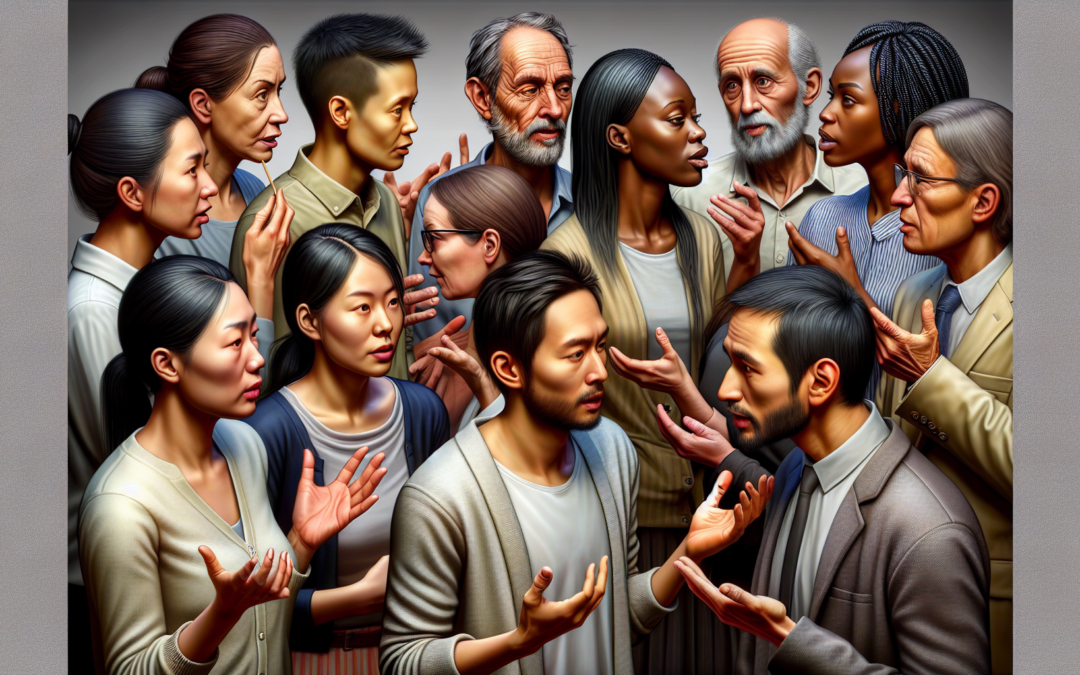The Shadow of Doubt: Law Enforcement and the Battle for Truth
In the realm of law enforcement, each day brings forth new challenges that test the moral and mental fortitude of those sworn to serve and protect. Officers across the nation wrestle with the delicate task of discerning truth from fiction, a pursuit complicated by inherent human biases, conflicting testimonies, and a relentless media landscape. It is a daunting, if not Herculean, task that demands unwavering commitment, razor-sharp judgment, and an unshakeable belief in the tenets of justice.
Walking the Thin Blue Line
Consider the moment an officer arrives at a crime scene. The air is thick with tension, adrenaline courses through veins, and initial observations start painting a picture—its colors largely determined by background, experience, and instinct. Every action taken, from securing the area to interacting with onlookers, becomes part of an intricate dance aimed at preserving not just the scene, but the fragile thread of public trust. Unbiased objectivity isn’t just an ideal; it is a necessity.
Officers are trained rigorously to detect nuances in behavior, subtle inconsistencies in statements, and physical evidence that might tell a different story from oral accounts. Yet, the tragedy often lies in the imperfections of human nature. People lie out of fear, out of guilt, or simply to protect someone they care about. Recognizing these layers requires more than just training. It requires empathy—a quality that breathes life into each investigation, allowing law enforcement to discern intentions behind actions.
Clashing Narratives
Consider a domestic dispute, a scenario tumultuous enough to cause ripples that extend beyond the immediate parties involved. The officer steps in to mediate, needing to parse through heightened emotions, frayed tempers, and conflicted recollections. The stakes are incredibly high; making a wrong call here could either place an innocent person in jeopardy or, conversely, leave a perpetrator unexposed.
It’s cases like these where the complexity of believability emerges in stark relief. Ideally, physical evidence supplements testimonies to form a coherent narrative, but life is rarely so tidy. The officer must rely on their ability to read body language, assess the consistency of stories, and bring a composed demeanor into an inherently volatile environment. Each interaction shapes the broader puzzle, and every detail, no matter how minor, can have utmost significance.
The Weight of the Badge
In an era marked by an acute awareness of institutional overreach, the pressures on law enforcement officers amplify significantly. Public scrutiny serves as both a necessary check and an enormous weight on their shoulders. Missteps aren’t just isolated errors; they cascade into societal debates and sew distrust among the very communities they aim to serve.
This confluence of skepticism and high accountability underscores the urgent need for transparent, rigorous procedures in every facet of policing. Sectioned body-cams, for instance, serve dual purposes of evidentiary support and public reassurance. With every recorded interaction, officers wear the truth, reducing the gray areas in contentious scenarios. Yet, even these technological aids are not infallible; interpretation is, and always will remain, a deeply human enterprise rich with complication.
Justice Through Vigilance
Moreover, collaborative efforts between law enforcement and the citizens builds pillars of trust crucial for societal cohesion. Community programs, active engagement in public forums, and transparent communication of police activities foster a culture where uncertainty subsides. Officers find an integral ally in residents willing to provide information fearlessly, knowing their inputs actually matter.
However, the race for justice isn’t just a matter of innovations and strategies; it’s also an intrinsic moral pursuit. In battling the ambiguities surrounding believability, officers are guided by a blend of the law and their own unwavering moral compasses. It’s this interwoven fabric of duty and honor that propels each officer, turning believability from an abstract concept into a lived, daily responsibility.
A Broader Lens: The John Ligato Show
For a deeper exploration into such gripping topics, tune in to The John Ligato Show. With his multifaceted experience in law enforcement, John Ligato explores the challenges officers face in distinguishing truth from deception. Each episode unearths compelling discussions and thought-provoking insights. Discover more by visiting his YouTube channel, and catch a glimpse of the profound narratives weaving through the justice system on this episode. Stay connected with ongoing dialogues through his Facebook page, where every like and share fuels the collective journey towards truth.
Navigating the labyrinth of believability demands far more than procedural expertise. It’s a journey vested in the ethos of service, underscored by every shout, every whisper, and every silent plea for justice. As civilians watch from the sidelines, understanding the weight carried by each action, each decision, perhaps imbues appreciation. For in standing at the cusp of uncertainty, officers don’t just walk the thin blue line—they redefine it, pushing ever closer to a world where truth prevails and justice is more than an ideal, but a lived reality.

Recent Comments